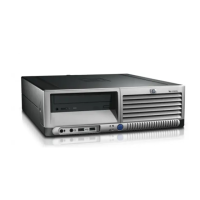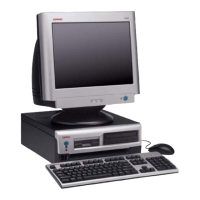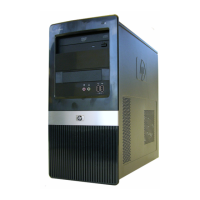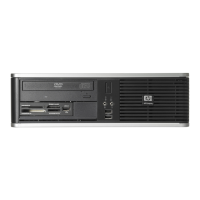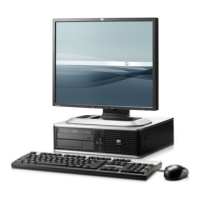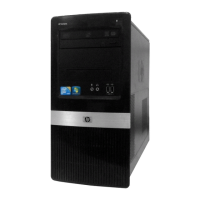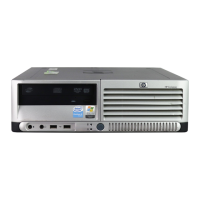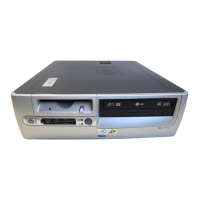Chapter 8 BIOS ROM
8.3 BOOT FUNCTIONS
The BIOS supports various functions related to the boot process, including those that occur during
the Power On Self-Test (POST) routine.
8.3.1 BOOT DEVICE ORDER
The default boot device order is as follows:
1. IDE CD-ROM drive (EL Torito CD images)
2. Diskette drive (A:)
3. MultiBay device (A: or CD-ROM) if applicable
4. USB device
5. Hard drive (C:)
6. Network interface controller
The order can be changed in the ROM-based Setup utility (accessed by pressing F10 when so
prompted during POST). The options are displayed only if the device is attached, except for USB
devices. The USB option is displayed even if no USB storage devices are present. The hot IPL
option is available through the F9 utility, which allows the user to select a hot IPL boot device.
8.3.2 NETWORK BOOT (F12) SUPPORT
The BIOS supports booting the system to a network server. The function is accessed by pressing
the F12 key when prompted at the lower right hand corner of the display during POST. Booting to
a network server allows for such functions as:
♦
♦
♦
Flashing a ROM on a system without a functional operating system (OS).
Installing an OS.
Installing an application.
These systems include, as standard, an integrated Intel 82562-equivalent NIC with Preboot
Execution Environment (PXE) ROM and can boot with a NetPC-compliant server.
hp compaq d330 and d530 Series of Personal Computers
Featuring the Intel Pentium 4 Processor
First Edition - June 2003
8-4

